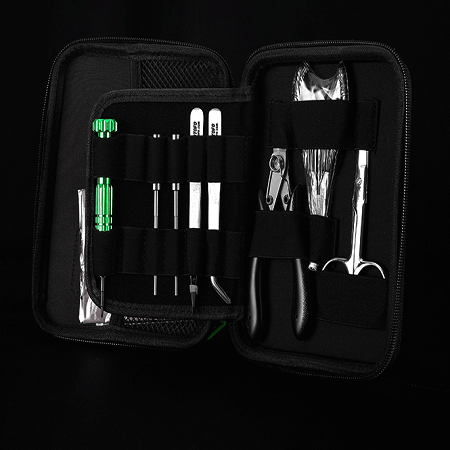House flowers for elegant home décor
House flowers add instant charm to any space. They bring texture, smell, and a natural beauty that can enhance a room easily. This makes your home look better without needing big changes.
This guide is perfect for U.S. homeowners who love interior design. It shows how to pick and style flowers to make your home look sophisticated yet welcoming. You'll find out about flowers that are beautiful and easy to care for. Plus, get tips on choosing flowers that match the light and mood of your room, and how to use colors for different seasons.
We’ll discuss the top indoor plants for adding beauty to your home. You'll also learn how to arrange them, choose the right vase, and care for them to keep them looking great. We use terms like house flowers, floral decor, and bloom beauties. This helps you find and use the best options for your home.
House flowers: choosing the best blooms for indoor elegance
When you pick house flowers, think about style, care, and room light. Choose plants that fit your daily life and where your windows are. Making thoughtful choices helps everything look good together with easy care.
Top house flowers for style and longevity
Phalaenopsis orchids have beautiful, long-lasting flowers. You can find them at Home Depot and Lowe’s. They bloom for 8–12 weeks with some care. Peace lilies have white blooms and are easy to keep. They work well in low light and aren't expensive. You can get them at garden centers.
African violets bloom often and are perfect for beginners. They fit well on shelves or small tables. Kalanchoe flowers bring bright color for weeks. For spring, ranunculus and peonies are great even though they last a bit shorter. Anemones and tulips bring fresh spring colors. Hydrangeas have big, textured flowers that look great in bouquets or pots. They stay fresh for about a week if you take care of them. Each flower should have a label with how long it blooms, how hard it is to care for, and where you can buy it.
Matching flower types to room function and light
Choose plants based on the room's use. Bedrooms are great for calm flowers like peace lilies and Phalaenopsis orchids. They make the room peaceful. Living rooms are good for big, eye-catching plants like potted hydrangeas or cymbidium orchids.
Bathrooms are great for plants that like moisture, like bromeliads, orchids, and ferns. Adding some cut flowers can be nice too. Kitchens are perfect for plants that love sunlight, like kalanchoe, geraniums, and small roses. They add quick color.
Look at your windows to figure out the light. South-facing windows get a lot of sun, great for geraniums and other sun-loving plants. East windows have morning light perfect for African violets and orchids. West-facing windows catch the afternoon sun, good for kalanchoe and other potted flowers. North windows have less light, ideal for peace lilies and shade-loving plants.
Color palettes and seasonal selection for cohesive decor
Choose colors that go with your room. Whites and ivories make a room simple yet elegant. Blush and soft pinks are romantic. Dark, vivid colors are dramatic and formal.
Use flowers that fit the season for new colors. Try tulips and ranunculus in spring, peonies and hydrangeas in summer. For fall, go for dahlias and chrysanthemums. In winter, amaryllis and forced bulbs are great. This keeps your decor fresh.
Adding different greens can make arrangements more interesting. Eucalyptus, pittosporum, and dusty miller add nice contrast. Mix a main flower, secondary blooms, and textured greenery for a beautiful arrangement.
Indoor plants and potted flowers for refined living spaces
Potted flowers add endless color and shape to a room, unlike cut flowers. They offer the chance for continuous blooms, interesting structures, and easy relocation with changing seasons. Meanwhile, cut flowers provide an instant wow factor, perfect for short displays. Combining these approaches allows for both immediate impact and durable beauty in your home.
Some top choices for interior plants include orchids, kalanchoe, and African violets, among others. They all bring unique textures and smells. Orchids love light but not direct sun, while African violets prefer steady light and water. Matching a plant's needs to your home's conditions is key for their success.
The way you arrange plants matters more than how many you have. Create appeal by grouping plants in odd numbers. Elevate them with stands and cachepots for a multi-level look, ensuring they're placed in well-lit spots but protected from harsh temperatures.
Vines like Hoya create a soft look on shelves or in baskets. Mixing these with upright flowers adds a dynamic feel. Remember to move plants around with the seasons to keep them healthy and happy.
Choosing the right pot is crucial for plant health. Go for pots with drainage for certain plants, but you can place them in decorative pots without holes for style. Different plants need different soils, so pick accordingly. Repot plants when they outgrow their current space.
Buying from local nurseries or trusted online sellers guarantees quality plants. Prices vary from affordable to premium, especially for special species. Pick plants that fit your budget and care ability.
Regular care keeps potted flowers looking their best. Water as needed, feed them lightly when they're growing, and watch their light and moisture needs. With some attention and the right care, these plants will brighten your living space beautifully.
Flower arrangement tips for sophisticated floral decor
Create displays that make a room pop with careful planning and intention. Start with choosing the right vase size for the space. This makes sure the arrangement looks balanced and fits well.
Basic floral design principles for home arrangements
For dining tables, keep the flowers about 1.5 to 2 times taller than the vase. This lets people see each other. Use a standout flower, support it with secondary blooms, and add greenery for depth. Balance the arrangement so it catches the eye without being too busy.
Choosing vases and vessels to enhance arrangements
Clear glass vases are perfect for a modern look because you can see the stems. Opaque ceramic vases add a pop of color for a classic feel. Metal and stone add interesting textures. Choose the vase shape based on your flowers.
Always clean vases well to avoid bacteria. Change the water https://pasjaogrodnika.pl often to keep flowers fresh. Use supports like floral tape when needed, but use foam carefully to avoid waste.
Styling arrangements for mantels, tables, and entryways
For tables, go for low designs that won't block people's view. Mantels look great with evenly spaced small vases. Entryways call for bold arrangements that grab attention.
Seasonal styles can transform a space: light and airy in summer; cozy with branches and berries in fall; white and green in winter. Turn and trim your flowers regularly to keep them looking fresh longer.
When mixing potted and cut flowers, keep colors coordinated. This links the arrangement together. Small flower groups on tables or cabinets add charm without clutter.
Houseplant care and home gardening practices to keep blooms thriving
Start by checking your plants often. Feel the soil before watering. Make sure it's dry to the depth the plant likes before you water again. Use a balanced liquid fertilizer when your plant is growing. Or use slow-release pellets for less hassle. If there isn't much light, use full-spectrum grow lights from Feit Electric or GE Grow. This stops the plants from stretching out too much. Grafitowy dach jaka elewacja będzie pasować? https://domwnajlepszymstylu.pl
Pay attention to what your plants tell you. If the lower leaves turn yellow, you might be watering too much. If the plant stretches out, it's searching for more light. Keep an eye out for pests like spider mites, mealybugs, and aphids. Check often. To handle bugs, use insecticidal soap or neem oil. Or you can pick them off by hand. Always keep new plants apart from your others for 1-2 weeks first.
Keeping a garden healthy means keeping it clean and understanding the seasons. Don't let water sit in saucers. Clean your pruning tools well. Water less in the winter and keep plants away from cold windows. To add some beauty in winter, grow bulbs like amaryllis and paperwhites indoors.
Propagating makes plants last longer. Try leaf cuttings for African violets or split cyclamen. Remove baby plants from kalanchoe to start new ones. Pick off dead flowers to help new ones grow. Repot your plants every 1-2 years, depending on the roots. Have tools like a moisture meter, pruning shears, a spray bottle, and pH strips ready. Learn more from your local cooperative extension or the American Horticultural Society. This way, you can keep your indoor garden beautiful all year.




















